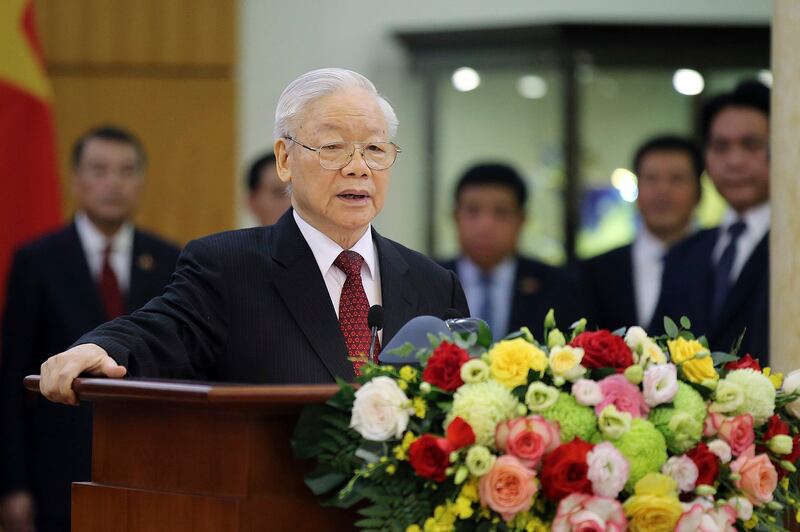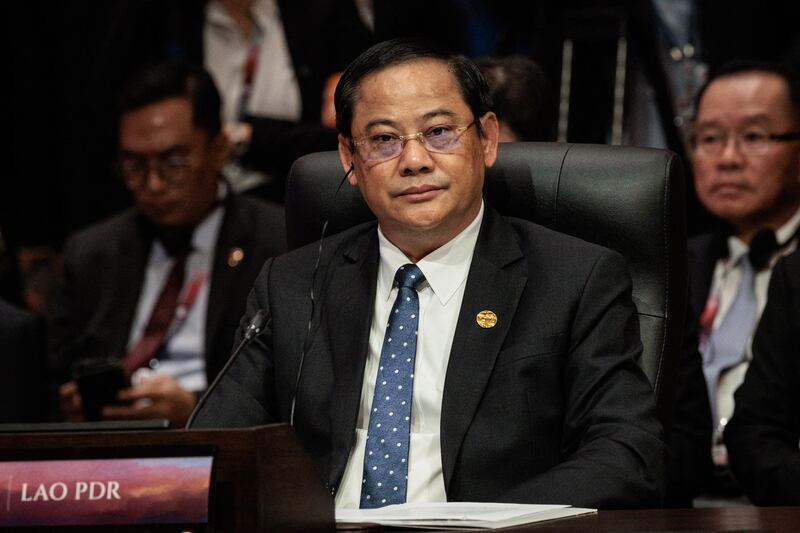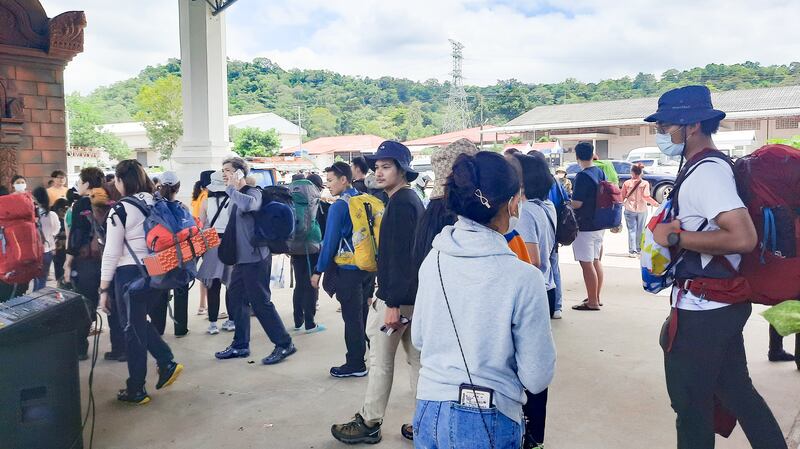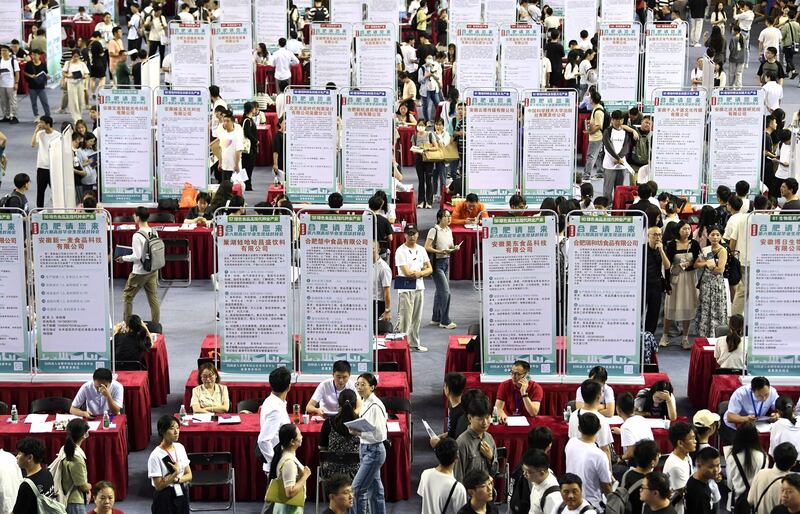A few years after embracing a market economy – with Deng Xioping's reforms in the early 1980s, the Vietnamese Communist Party's Doi Moi and the Lao People's Revolutionary Party's New Economic Policy in 1986 – the three communist party-states set about trying to normalize how power is distributed within their institutions and between the generations.
All adopted informal policies that not only separated power between presidents, party chiefs, prime ministers and premiers, as well as heads of parliaments. They also accepted term limits and retirement ages for those in high office. No senior leader was supposed to hold power for more than two terms. In Vietnam, they were supposed to resign after the age of 65. In China, after 68.

For several decades, these norms held up. But look at the situation today.
In China, Xi Jinping, 70, is now president for life, serving his third term with no prospect of a replacement, except for a palace coup (vide rumors that spread last year). He abolished term limits in 2018.
In Vietnam, Nguyen Phu Trong, 79, the Vietnamese Communist Party general secretary, is now in his third term, has repeatedly violated the retirement age, and between 2018 and 2021, also held the post of state president, snubbing the apparent separation of powers between the top four positions in the country. It's not abundantly clear that he has found a trusted successor to take over in 2026.
Piling up debt
In Laos, these informal rules have been more sticky, but in late 2022, Sonexay Siphandone, 57, was made prime minister, bringing the prospect of dynastic rule. Sonexay is the son of a former party chief and state president, Khamtai Siphandone.
But that's only half of it. In fact, it's far from the worst excesses of this older generation. In Laos, the aging apparatchiks of the communist party have racked up a national debt that now stands at around 120 percent of GDP, although it could be higher if some other liabilities are thrown into the mix. What is a national debt but a tax on the young and unborn?

According to the World Bank, debt service payments are equivalent to 61 percent of domestic revenue, compared to 35 percent in 2017. Over the same period, public spending on education and health fell from 4.2 percent of GDP to 2.6 percent. The government has jammed shut its pockets. Civil servant salaries have barely been raised in years. Vientiane won't invest in the sort of social services the public wants.
A shortage of teachers and woeful standards of national schools has been one of many sources of discontent this year. It's little wonder why there is such a sense of despair in the country, exacerbated by the ongoing inflation crisis and a collapsing national currency, and leading to an exodus of the young from the country.
Over supply of college grads
Indeed, it is because so many Laotians can emigrate for work each year (perhaps as many as 100,000 this year) that the young aren't drawn to anti-regime agitation. According to a recent BBC report, some 38.7 percent of 18-to-24-year olds are not in education, employment or training, the highest in Southeast Asia.
In Vietnam, it was more than 11 percent last year, although this was still up from around 8 percent in 2010. In China, the urban youth unemployment rate rose to 21 percent in May, up from 15.4 percent two years earlier.
China and Vietnam suffer from an oversupply of university-educated youths, who cannot find jobs to match their expensive educations. According to a recent report from Vietnam, only a fifth of positions on offer in Ho Chi Minh City, the southern economic hub, want applicants with university degrees.
Yet around 85 percent of potential workers seeking employment are university graduates. The same article, found in a state-run newspaper, could get away with stating: “Vietnam has not invested enough in improving the quality of its higher education.”

As Hong Kong's South China Morning Post reported this month, the Chinese experience of "lying flat"—a term denoting youths who have taken to doing the bare minimum to get by in life—has also come to Vietnam, with youngsters listless as their wages fail to keep up with the rising cost of living and house prices, while tiring of their menial work. It reported among other figures that "average household incomes in Ho Chi Minh City stood at some 15 million dong (US$618) per month for the first half of the year, while the average price of a flat there is 5.5-6 billion dong (US$206,000-247,000), 30 times higher than the average annual salary."
All the while, the communist states say that they are determined to build proper welfare states. But who are these promised welfare systems for? By 2035, a third of China’s population will be aged 60 and over. Pensions reforms have been launched. Vietnam will have an aged society by 2035.
Higher tax burden on the young
According to the World Bank, Vietnam has until 2042 before the "demographic window of opportunity" closes. Vietnam, it added, "is getting old before getting rich". Indeed, GDP per capita in Vietnam is just $3,750, compared to $12,500 in China. It's little surprise then that the communist governments (especially in Laos) have focused on relatively instant, infrastructure-led development that promised to boost their GDP.
China’s economic growth is obvious to all. But the side effect was spiraling debt, which now falls on the young and unborn generations to pay off without making the economies as stable for these generations as central planners first imagined.

Can an intergenerational “contract” be updated and re-signed? That seems unlikely. The future of all three states is an ever-higher tax burden on the young, more costly welfare systems to pay for the elderly, and nostalgic communist parties seeking to recreate their imagined glory days.
In Vietnam, Trong is trying to resurrect the “morality” and puritanism of the pre-Renovation years. Xi’s “rejuvenation” of China isn’t taking on a youthful appearance, although the young will have to fight on its behalf if there is a war against Taiwan and with the United States.
One ought to be terrified of a nationalistic, authoritarian government facing the prospect of economic decline. The three communist states understood the first part of Edmund Burke’s appeal to an intergenerational social contract. There is a partnership between “those who are living” and “those who are dead”. But what about “those who are to be born”?
David Hutt is a research fellow at the Central European Institute of Asian Studies (CEIAS), the Southeast Asia Columnist at the Diplomat, and writes analysis pieces for several newspapers and magazines. He has covered Southeast Asian politics since 2014. The views expressed here are his own and do not reflect the position of Radio Free Asia.
